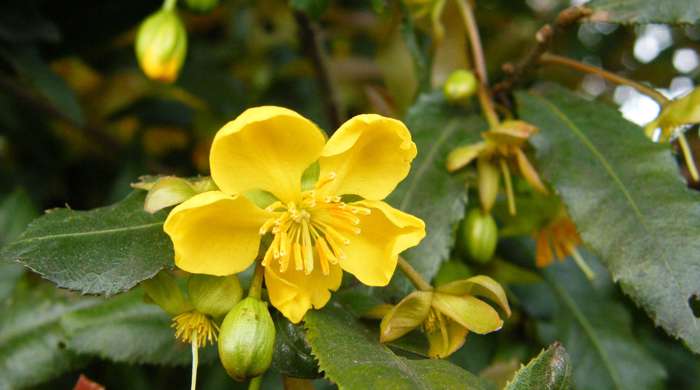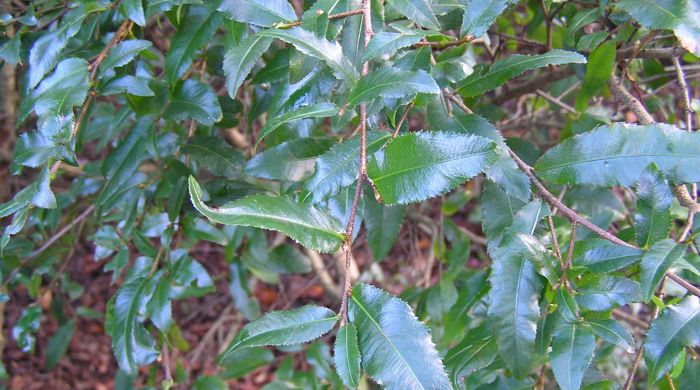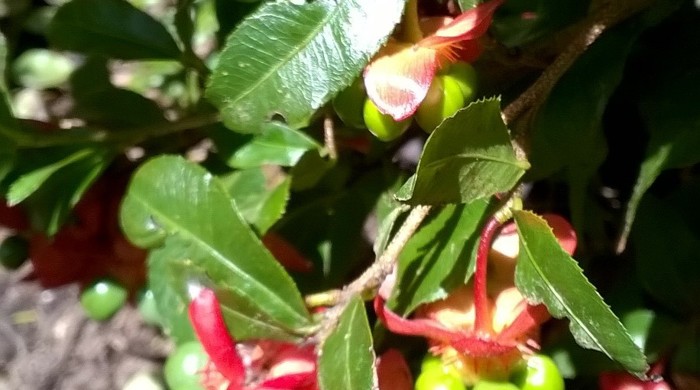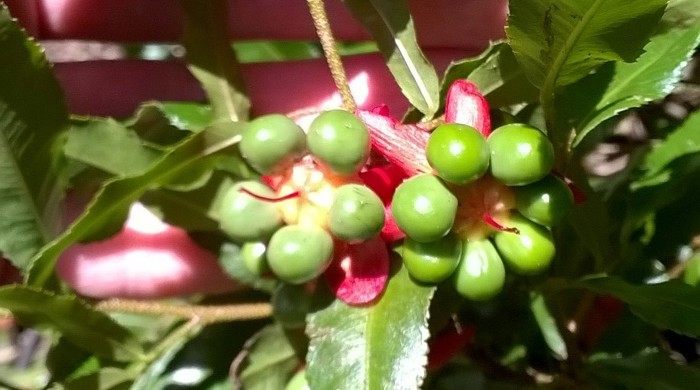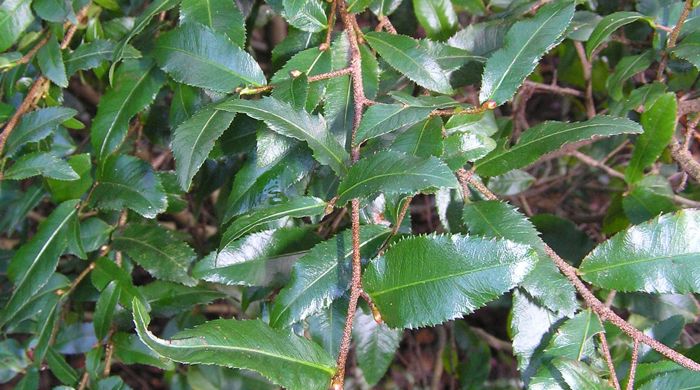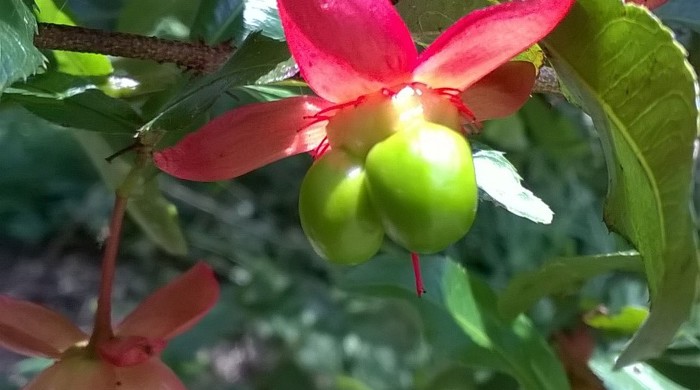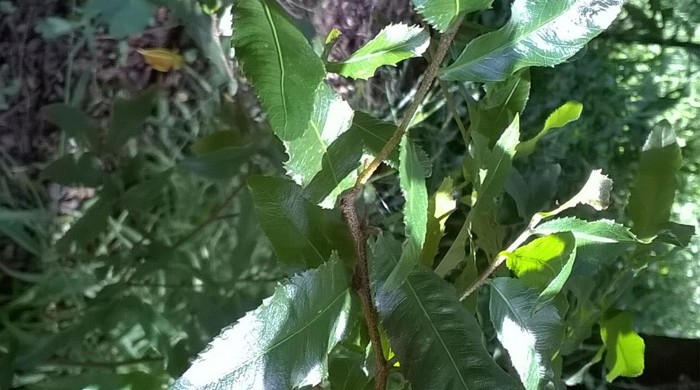Ochna serrulata
Mickey mouse plant
Family: Ochnaceae
Origin: South Africa
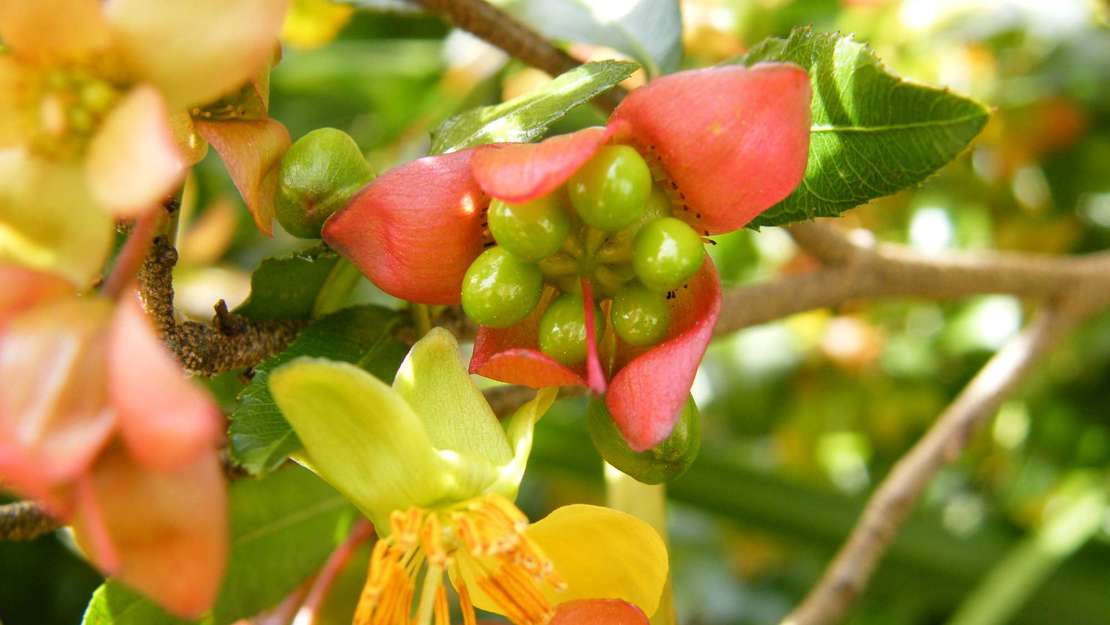
Regional Pest Management Plan (RPMP) status
- Aotea — Exclusion
- Whole region — Sustained control
- National Pest Plant Accord Species
General description
Shrub < 3 m tall. Leaves are oval, < 5 cm long and finely toothed. Flowers are yellow, < 2 cm in diameter and borne in September – March. Fruit is black, attached to red sepals, resembles the face of Mickey Mouse and is borne in autumn.
What you need to know
To help protect our environment:
- You must not breed, distribute, release or sell Mickey Mouse plant. As Mickey Mouse plant is a National Pest Plant Accord species, these restrictions apply within the Auckland region and across the whole of New Zealand.
- You must not plant Mickey Mouse plant within the Auckland region, unless you are transferring an existing plant on your land to another location within the boundaries of the same property.
- You must destroy any Mickey Mouse plant on land that you occupy if it has been planted in breach of the above rules and you are directed to do so by an authorised person.
If you see Mickey Mouse plant anywhere on Aotea/Great Barrier Island group, please report it to Auckland Council at pestfree@aucklandcouncil.govt.nz.
Habitats
Forest, forest margins, riparian areas, roadsides, disturbed sites, wasteland, grassland, rock walls.
Dispersal
Seeds dispersed by birds, water and gravity. Human-mediated dispersal through deliberate plantings.
Impact on environment
Potential to invade intact forest ecosystems. Likely to dominate scrub layers and suppress native recruitment.
Control
Site Management
Follow up treated areas 3 times per year. Encourage natural regeneration of native plants or replant treated areas where possible after 2-3 treatments to establish dense ground cover and minimise reinvasion.
Recommended approaches
Do not attempt to undertake control of this species on Aotea/Great Barrier Island group. Please report to Auckland Council if seen on Aotea/Great Barrier Island group.
Physical control
Method: Dig out.
Plant parts requiring disposal: Seeds.
Disposal options: Remove to greenwaste or landfill if practical.
Biocontrol
Biocontrol is currently not available for this species.
Community agrichemical control recommendations
No qualifications: Cut stump and paste freshly cut base of stems with metsulfuron gel.
Basic Growsafe certified: Cut stump and spray freshly cut base with 5g metsulfuron-methyl per 1 L of water.
Certified Handler/Experienced agrichemical user: Foliar spray with 5g metsulfuron-methyl per 10L of water and 20ml penetrant.
Caution: When using any herbicide or pesticide please read the label thoroughly to ensure that all instructions and safety requirements are followed.
